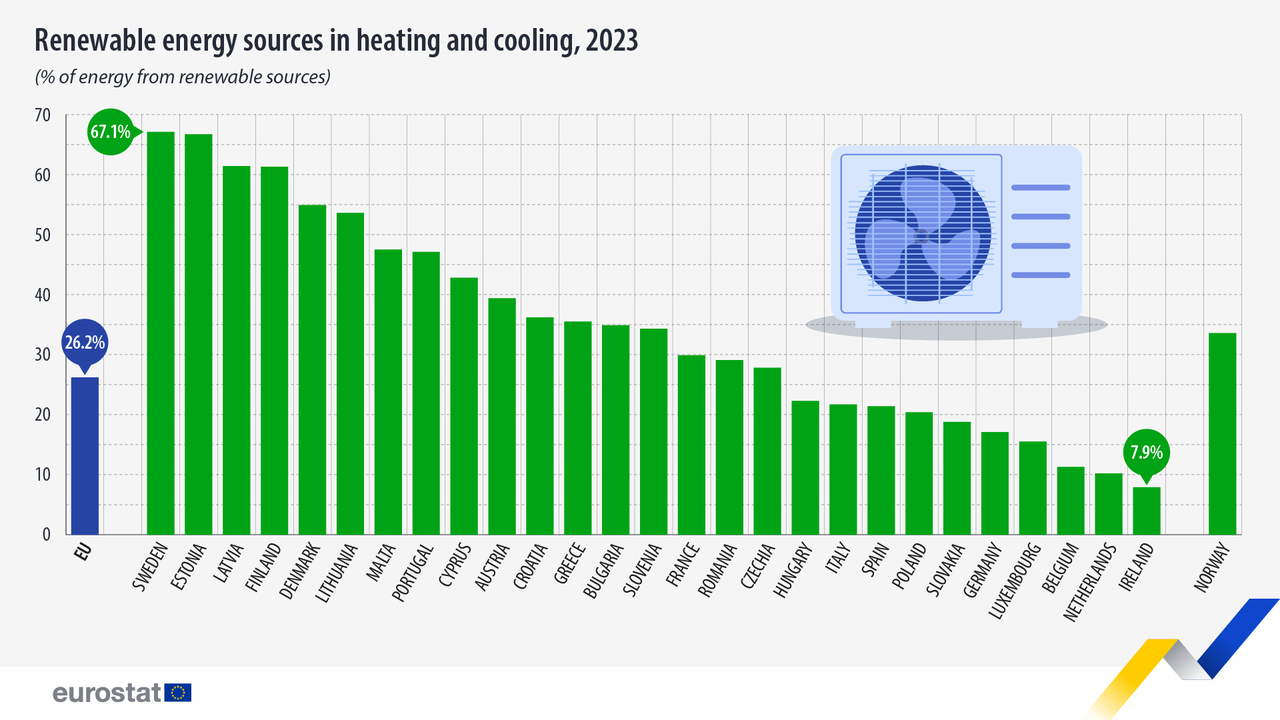Renewables power 26.2% of EU heating and cooling, Sweden leads the way
According to Eurostat annual analysis, the share of renewable energy sources in heating and cooling has reached its highest value since 2004.
Every year, Eurostat, the statistical office of the European Union, publishes data on the share of energy from renewables used for heating and cooling with a two-year offset (i.e. the data for the year 2023 is released in 2025).
The latest figures published by Eurostat show that 26.2% of total energy use for heating and cooling in the EU came from renewable sources in 2023, a 1.2 percentage point increase from 25.0% in 2022. This is the highest value since the time series started in 2004, representing a 11.7% increase over the past decade.
Among the EU Member States, Sweden stood out with 67.1% of the energy used for heating and cooling in 2023 stemming from renewable sources followed by Estonia (66.7%). Both countries relied mostly on biomass and heat pumps. They were followed by Latvia (61.4%), which uses a large share of biomass. In contrast, in Ireland (7.9%), the Netherlands (10.2%) and Belgium (11.3%), renewable sources contributed the least to heating and cooling.

The EU Directive 2023/2413 of 18 October 2023 on the promotion of the use of energy from renewable sources requires EU countries to increase their annual average share of renewables in heating and cooling by at least 0.8% from 2021 to 2025 and by at least 1.1% from 2026 to 2030.
Compared with 2022, 21 EU Member States registered an increase in the share of renewable energy sources used in heating and cooling. Austria (+8.1 pp), Malta (+7.5 pp) and Greece (+4.9 pp) recorded the largest increases between 2022 and 2023.
Source
Eurostat. 5 March 2025. https://ec.europa.eu/eurostat/en/web/products-eurostat-news/w/ddn-20250305-1
